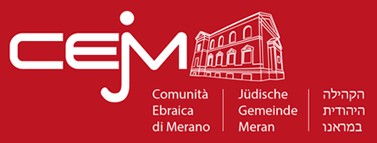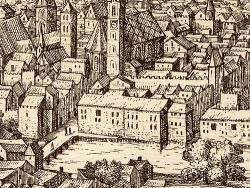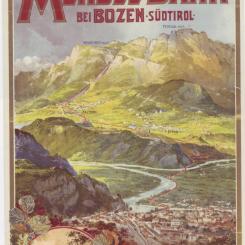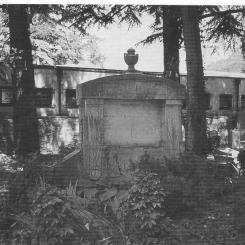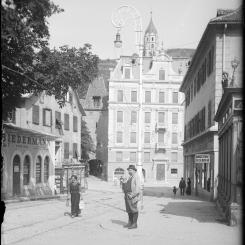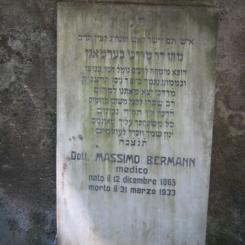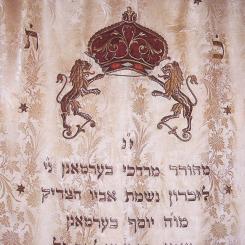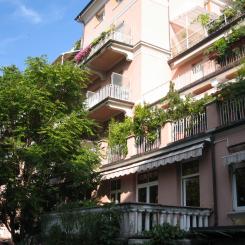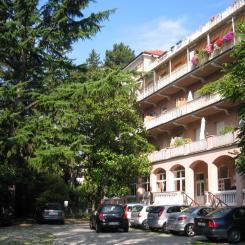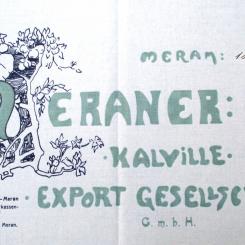The History of the Jewish Community in Merano
First Traces
First traces of Jewish life in Tyrol date back far into mediaeval times. Documents evidence that in 1297 the Jew Maisterlino was a tax collector in Tell/Töll close to Merano. In 1311, the mint of Merano was administered by Bonisak, a Jew born in Gorizia/Görz, and in 1403, Isaak and Samuel were assigned by Bishop Ulrich II. the privilege to conduct a bank in Brixen/Bressanone.
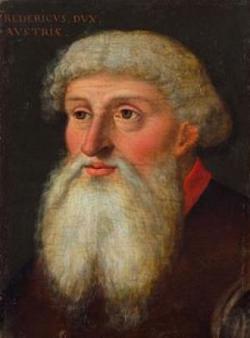
Frederick IV.
Documents refer to a Jewish population in Bozen/Bolzano. In 1431 the Habsburg Duke Frederick IV, Count of Tyrol, also known as Frederick of the Empty Pockets, granted his personal protection to four Jewish families living in Bolzano. A letter written in 1402 shows that Kaspar of Schlandersberg borrowed an amount of 40 gulden from Jews living in Bozen/Bolzano.
In 1520, Habsburg Emperor Maximilian I by decree expelled all Jews living in Tyrol. Jews living in Bozen/Bolzano were not affected by the decree, so some Jews from Tyrol settled there. But only a few decades later, in 1573, Ferdinand II., Count of Tyrol, ordered that Jews living in Bozen/Bolzano as well as Jews travelling to and from Bozen/Bolzano had to be badged with the “Jew symbol”, which was a circular piece of yellow cloth with a diameter of 8,5 cm, visibly sewed on the attire.
Founders of Tourism in South Tyrol
Owing to the commitment of three Jewish families the reputation of Meran/o and Southern
Thanks to the investments of the Schwarz family the infrastructure was developed in South Tyrol, in Trentino and Meran/o. Members of the Schwarz family established a railway connection in Garda, from Bozen/Bolzano to Kaltern/Caldaro, a funicular railway to Virgl/Virgolo near Bozen, which at its opening in 1907 was Europe's steepest funicular, and were also involved in the construction of the Mendel funicular railway. The Schwarz family was involved in the drainage of the lots of land bordering the river Etsch/Adige and in their subdivision and conducted breweries in Brenner/Brennero, in Gries near Bozen and in Vilpian/Vilpiano.
Daniel Biedermann
In the first half of the 19th century the Biedermann family also opened a private bank as well as an office for monex exchange. The D. & J. Biedermann Bank was however not founded in Bozen, as the Schwarz family did, but in Meran, which was just about to expand as a health ressort. Daniel, Jakob and Moritz Biedermann stemmed from Hohenems and settled down in Merano in the 1840s. The Biedermann brothers spurred the improval of the reception and health treatment infrastructure for tourists. In short time, the D. & J. Biedermann Bank became one of the most renowned banks of the area.
The Bank D. & J. Biedermann
Sigmund Freudenfels was a Boemian merchant of Jewish descent, converted to catholicism in the 1880s in Meran. Here, together with Arthur von der Planitz and Karl von Grabmayr, he founded the Calville Export Company, which was one of the first fruit export companies in Tyrol. Apart from numerous honorary functions in various different fields Sigmund Freudenfels was also involved in the Council of Untermais. He died in 1905 and was buried in his adopted home. Similarly to the Biedermann brothers, their successor Friedrich Stransky, the Bermann family or Raphael Hausmann, Sigmund Freudenfels thus contributed to the fact that Meran made progression in developing its infrastructure, and, similarly to the above mentioned, a public appreciation of this interesting personality remains a desideratum.
Founders of Jewish Tourism in Meran
The kosher restaurant Starkenhof
In the 1870s, Josef and Katharina Bermann inaugurated Bermann’s kosher restaurant. It was the first kosher restaurant in Meran. The family came from Kroměříž, a town in Estern Moravia, and settled down in Merano in about 1870.
In about 1880 Josef Bermann rents the pension Starkenhof for another kosher undertaking. In December 1885 he buys the building of the Starkenhof, for which he pays 27.000 gulden. Here services are held regularly at the beginning of Shabbat and on Shabbat.
Kosher Hotel Bellaria
Leopold Bermann, the son of Josef, bought the Bellaria in 1905. But it took him four years, until he finally obtained the licence for hotel industry in 1909. Famous personalities of from the political and social life sojourned or had dinner at the Bellaria like for example Israel’s first president Chaim Weizmann or the author Zeev Vladimir Jabotinsky. Leopold's brother Max Bermann devoted himself to medicine. From 1893 onwards he worked as specialist for uretic and venereal diseases, for nervous and inner diseases. After the turn of the century he owned and conducted the Sanatorium Waldpark in Meran-Obermais. One attribute was common to all members of the Bermann family: They were benefactors sparing no effort in order to support charitable purposes. Josef Bermann, the son of Leopold and the grandson of the founder Josef, was the last president of the Jewish community before the its annihilation in the Shoah. Like many other family members Josef and his wife Sara were strongly deluded by the behaviour of the citizens of Merano.
Jacob Jechiel Gans (Sara's brother) and the bridal couple Sara and Josef Bermann at their wedding on 13.4.1926 in the garden of the Bellaria
Purim at the Bellaria in 1923
The Jewish Sanatorium in Meran
An idea, a little mansion and the wish to help other people. This simple plan underlied the foundation of a sanatorium for poor Jewish patients in Villa Steiner in 1893. But soon the building had become too small in order to satisfy the high demand.
Numerous donations from all over the world finally enabled the construction of a new building, which was inaugurated on 23 January 1909. It was equipped with state-of-the-art technical and medical facilities.
Every floor was equipped with baths and – at that time still a rare phenomenon – with hot and cold running water. Bath tubs and showers were made of enamel. Linoleum floors inhibited germinal infection.
Kashrut rules were respected: One kitchen served for the preparation of meat and another kitchen was reserved for the preparation of dairy products. The sanatorium was sold in the 1950s. Today the building hosts private apartments and public offices of the provincial administration of Bolzano.
